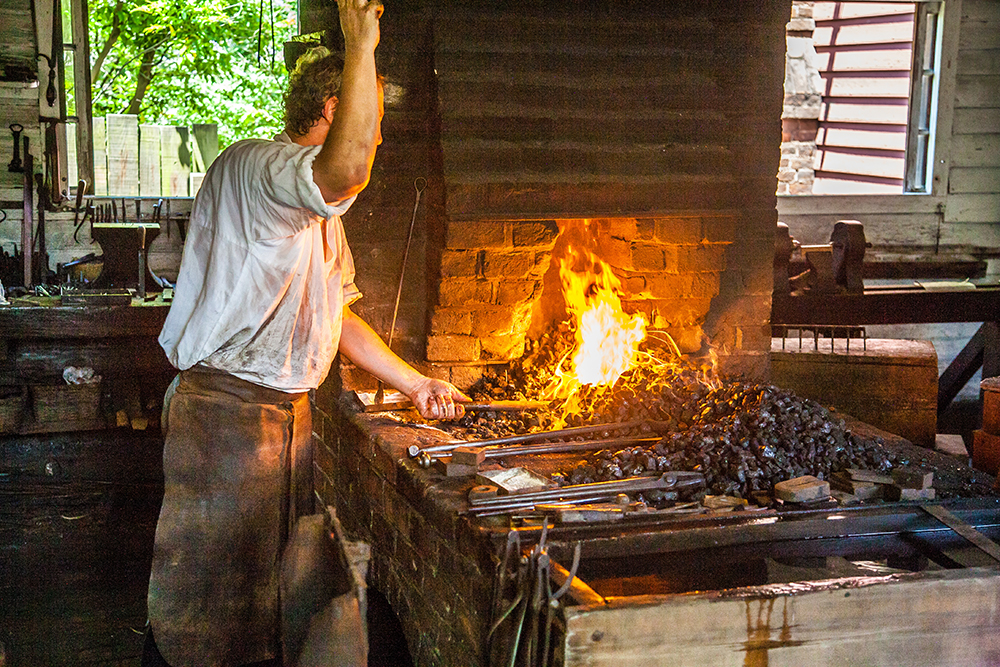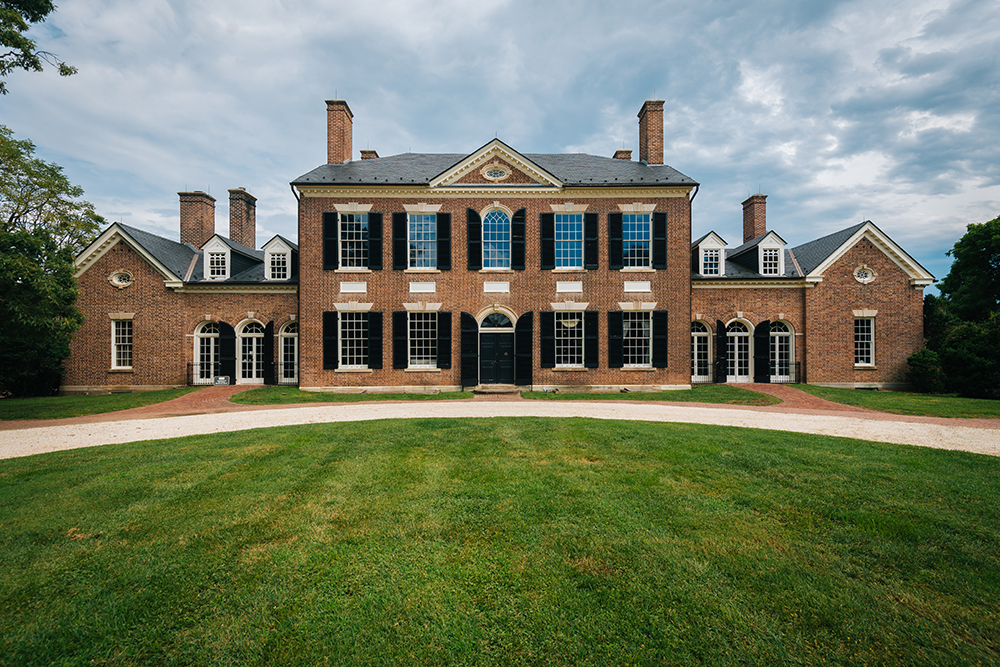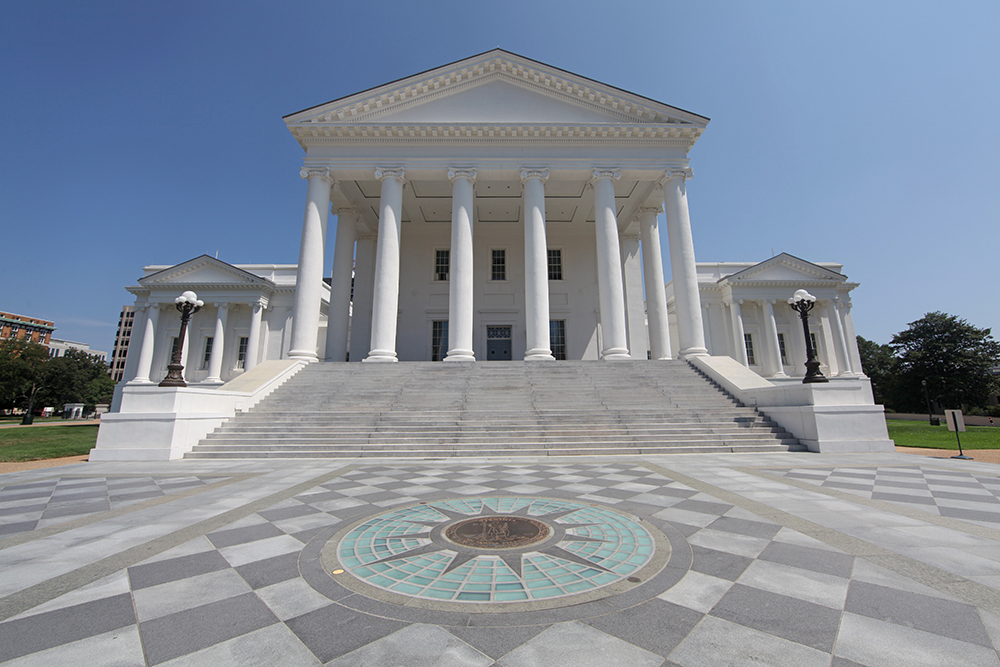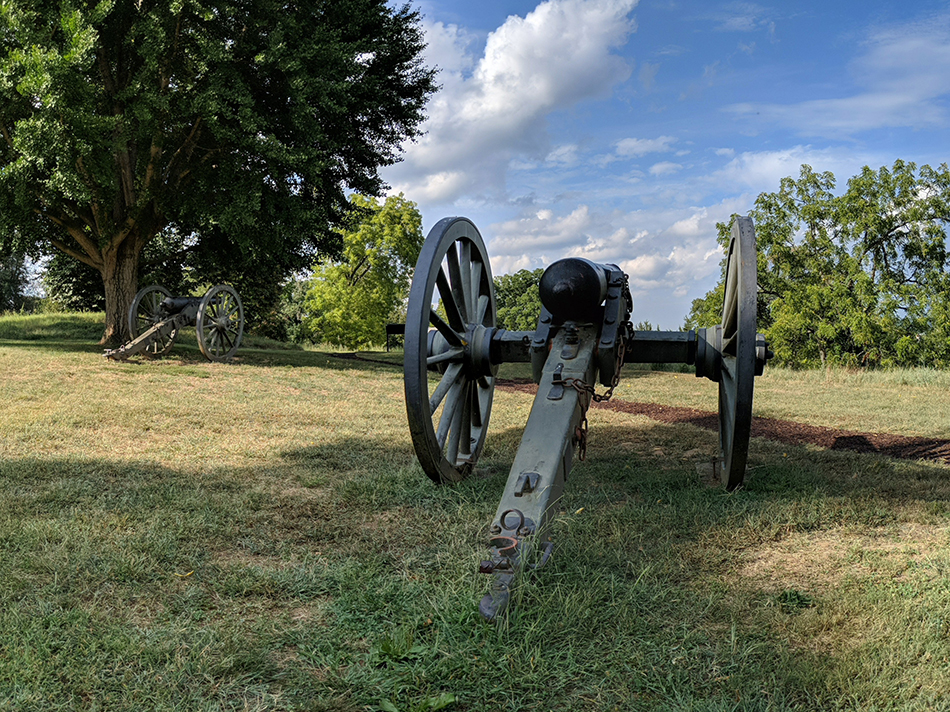Virginia is where America’s history began. Our country’s greatest patriots, from Washington to Jefferson, to Madison, Mason, and Henry, were all Virginians.
A trip to Virginia is where you can walk in their footsteps, visit their homes, and relive the events that gave birth to the ideals that patriotic Americans cherish to this day.
But where do you even begin in a state so rich in history like Virginia?
Keep reading to discover our top ten sites you don’t want to miss.
1. Jamestown
Captain John Smith, perhaps the most famous settler, made his home at Jamestown. It is also where he met the famous Powhatan Indian, Pocahontas.
In 1607, the lush Virginia landscape became home to many English settlers, making it the first permanent settlement in the New World.
Many archaeological digs remain underway in Historic Jamestown, and you can tour the excavation sites and learn about some of the treasures discovered there.
There are also beautiful replicas of the ships that brought settlers over from England. You can board the ships and explore Jamestown Settlement, located less than a mile from Historic Jamestown.
Finally, take a walk through the re-created Powhatan village and see how their tribe lived before the influence of European cultures.
2. Colonial Williamsburg

It’s hard to imagine another nation’s capital besides the opulent Washington D.C., but from 1705-1779, Colonial America’s capitol resided in Williamsburg.
Being close to Jamestowne, governing individuals moved to colonial Williamsburg and created the first representative assembly, The Virginia House of Burgesses.
This assembly was the think-tank that organized the plan to fight for our independence against Great Britain; a move that changed the course of history with the Revolutionary War.
Colonial Williamsburg is a beautiful replica of the town that once stood there.
You can purchase a pass that will allow access to all the historical buildings such as the Colonial Capital Building, but walking the grounds is free of charge.
Venture along paths of beautiful gardens, admire actors in full colonial dress, find unique souvenir shops, and get your fill with plenty of fine-dining experiences.
3. Monticello
Thomas Jefferson’s luxurious abode is a reflection of the stately accomplishments he granted our nation throughout his life.
Beyond becoming the third President of the United States, Jefferson founded the University of Virginia and is famously one of the five who authored the Declaration of Independence.
Monticello was more than a just a home to Jefferson. From the age of 26, he spent years crafting it’s look and feel after his father left him the Piedmont land.
On the lavish grounds, you can admire the landscaping, pay your respects at Jefferson’s grave, and tour the home of one of the most influential men in American history.
4. Mount Vernon

Another breathtaking ground is Mount Vernon. Home to the first President of the United States, George Washington, the 500-acre estate rests peacefully on the Potomac River.
George Washington was a highly involved man in American history, both politically and militarily.
He was Commander in Chief during the Revolutionary War and fought bravely against the British to lead us into victory.
The land of Mount Vernon had been in the family since 1674, but it wasn’t until 1774 that Washington made the house his own by adding a north and south wing to his father’s original modest design.
It took 20 years to finish the vision he had for Mount Vernon, and it is truly a sight to be seen. Washington lived there with his wife Martha until her death in 1799.
When touring the grounds, you can admire George Washington’s architectural vision, tour inside his home, and see the tomb where both he and Martha are buried.
5. Yorktown
The Historic Triangle consists of Jamestown, Williamsburg, and Yorktown; all of which are connected by the Colonial Parkway.
Yorktown is another must see site near Colonial Williamsburg.
Yorktown is where the last battle in the Revolutionary War took place, giving the original 13 colonies their independence from the tyranny of Great Britain.
Here you can watch live demonstrations of ancient artillery performed by actors in authentic war gear.
The Museum of the American Revolution will give the history buff a more thorough walk-through of Yorktown’s significance during the war as well.
And feel free to interact with the many re-enactors in Yorktown. They will tell you all about what life was like for them back then. It will be a fun and educational experience for the whole family.
6. Montpelier
The fourth President of the United States, James Madison, resided in his estate of Montpelier near Charlottesville, Virginia.
Madison was called the Father of the Constitution and was an architect of the Bill of Rights. He was a highly influential man who made his mark on American history.
His life is remembered today not only in the history books, but in the preservation of his beloved home.
You can tour the home, roam the through the gardens, wander down the walking paths into green meadows and forests, and even see an archaeological dig site.
7. The Virginia State Capitol

Much like Monticello, Jefferson poured a lot of sweat and brilliance into the Virginia State Capitol building located in Richmond, Virginia.
Virginia’s General Assembly first occupied this architectural wonder built after the Revolutionary War.
During the Civil War, the Congress of the Confederate States made this their headquarters.
Later, in 1904 and 1906, long wings were added to this iconic building where Virginia still makes legislative history today.
Visitors are welcome to tour the building freely, remembering all that took place within its walls. Guided tours are also available, just call ahead to make an appointment.
8. Appomattox
The Civil War ended in 1865 at Appomattox after the four bloodiest years in United States history.
It is a solemn visit, remembering a dark time when our people mangled one another in political dispute.
The Museum of the Confederacy will give you an up-close look at the lives of Confederate soldiers during the war as well artifacts from that era.
You can also visit the very ground on which the war ended at the Appomattox Court House National Historic Park.
Don’t forget to visit the McLean House, where General Lee and Grant signed the surrender deal of the Civil War.
9. Fredericksburg and Spotsylvania National Military Park

During the American Civil War, influential battles were fought in Fredericksburg, Chancellorsville, The Wilderness, and Spotsylvania.
These Virginia battlefields witnessed the height of the horrendous warfare that occurred during the Civil War.
Towns were destroyed as enemies looted homes, and farms were devastated as gunfire blasted and boots trampled the land underfoot.
People fled to the countryside in desperation to escape an ill end. Over 85,000 men were wounded during these battles, and 15,000 killed.
You can visit two Union headquarters in the park and a few plantations that were used as field hospitals to tend to the thousands in need of care.
To reflect on the lives lost, you can visit the Fredericksburg National Cemetery where over 85% of the graves are unknown.
Walking the battle grounds is a bittersweet experience, as the landscape still has hints of the war with original trenches and walls.
10. John’s Church
“Give me liberty, or give me death!” This legendary phrase spoken by Patrick Henry during the second Virginia Convention in 1775 highlighted the national mood before the Revolutionary War.
Henry’s powerful speech is attributed to the decision to send Virginia troops into war.
In the company of Thomas Jefferson and George Washington, Henry made an impact that the little church never imagined it would witness.
The oldest church in Richmond, St. John’s was built in 1741 and can still be seen today.
Take a tour and sit in one of the original pews the Founding Fathers sat in while you learn the story of Patrick Henry.
Virginia is a state full of surprises. There is much to see and much to do. Visiting once will probably not be enough.
And as you sift through all the historical relevance Virginia has to offer, there are still plenty of modern amenities to give you a break from your travel back in time.










